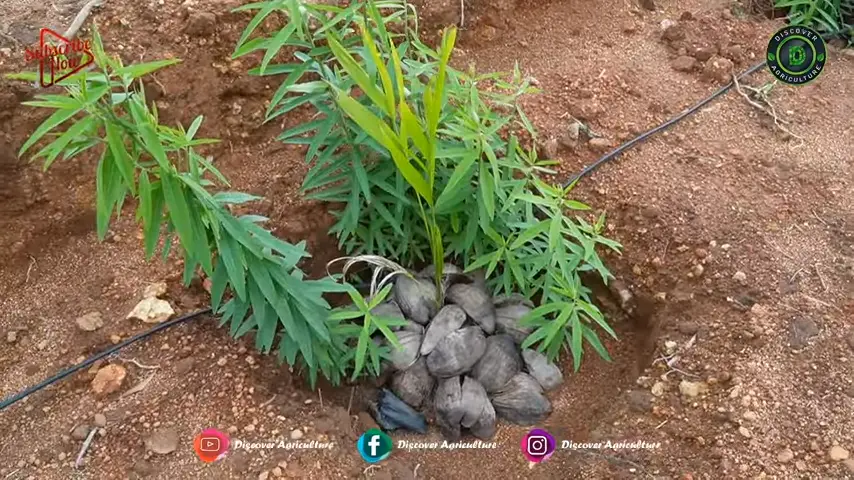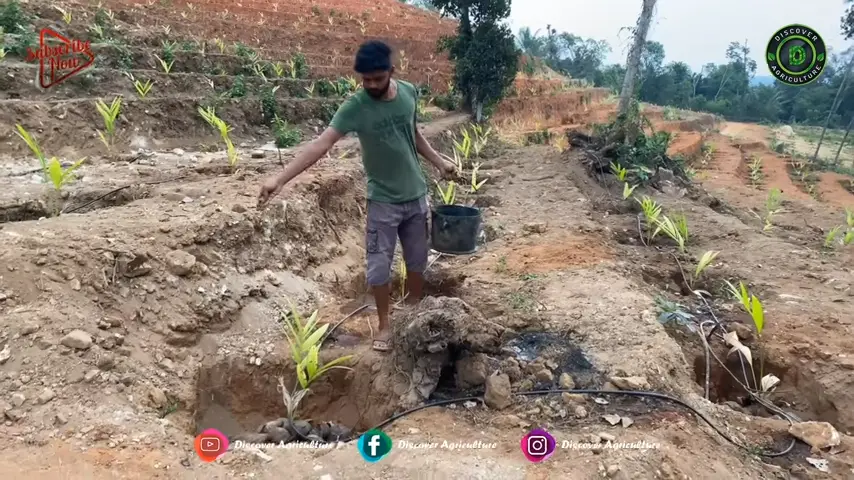Sunn Hemp
Sunn hemp is a quick-growing leguminous crop cultivated for green manure as well as a fiber crop. this plant prevents soil erosion and loss of nutrients, and also conserved soil moisture. It can be grown in adverse climatic conditions like drought, alkalinity, and salinity.
Within 60 to 90 days, it can produce up to 120 pounds of nitrogen per acre and can suppress weeds up to 90 percent. Sunn hemp isn’t just a soil builder, it also offers benefits as a livestock forage producer. In new arecanut plantations, it can be used for shade, and later it can be given as green manure for the same plants.
This is Kambalimoole Arecanut farm. Already we have made a detailed video on this farm. Check it out later.
Recently they (2 brothers) have planted arecanut plants here. In the summer newly planted arecanut plants need shade. After much research, they decided to cultivate sunn hemp with arecanut plants. it is fast-growing, so it can be used for shade. Later it can be used as green manure for the same plant.
Basically, Sunhemp originated in India. Sunn hemp, a tropical plant primarily grown as a cover crop or green manure, has increased in popularity dramatically over the last decade.
Sunn hemp plant Characteristics
It is a branched, erect, herbaceous shrubby annual growing plant. It can grow 3 to 9 feet high with bright green and elliptical leaves.
Sunn Hemp has deep yellow terminal flowers, and the light brown pods are small and inflated. It has a well-developed root system with a strong taproot.
SOIL REQUIREMENTS
It can be cultivated in all types of well-drained soil. Actually, it will grow in all soil types. But Well-drained sandy loam or loamy soil having sufficient moisture holding capacity are more suitable for sunn hemp.

POPULAR VARIETIES WITH THEIR YIELD
There are many varieties. But Narendra Sanai 1 & P A U 1691 are the best varieties.
Narendra Sanai 1:
It will be ready to harvest in 152 days. Leaves are broad, and green, flowers are yellow and seeds are brown and blackish in color. 45-60 days after sowing, the crop is buried in soil for green manure purposes, and then add 3.8 to 6.2 tonnes per acre of green biomass in the soil. Gives an average seed yield of 4 Quintal per acre.
P A U 1691:
Ready to harvest in 136 days. Leaves are medium size, green in color, flowers are yellow and seeds are brown and blackish in color. 45 to 60 days after sowing crop is buried in soil and adds green biomass of 4 to 6.5 tonnes per acre. Gives an average seed yield of 4.8 Quintal per acre.
LAND PREPARATION
If you are growing it as a secondary crop, then soil preparation is not required.
if you are growing it as a primary crop, then To bring soil fine tilt, plow land properly. Before sowing ensures soil content has sufficient moisture.
Seed preparation and seed sowing
It can be sown in any season. For green manure purposes, use a seed rate of 20 kg per acre and for seed, purposes use a seed rate of 10 kg per acre. This is sunn hemp seed. Put it in a fiber bag and tie it tightly. Before sowing, soak the seed overnight in water for better germination. After overnight soaking, you can find seed sprouts.
Once the seed is ready to sow. Sow the seeds wherever you need. They’re sowing seeds only around the arecanut plant. This is more than enough for arecanut plants. They are not growing it for seed or fiber purposes. They are growing it just for shade and green manure. After a few days, you’ll find the sunn hemp plant’s growth at the arecanut basin. It grows really fast.
Fertilizer Requirements
If you are growing it for manure, no need to apply fertilizer. Even if you don’t apply fertilizer also, It grows very well. if you are growing it for seed or fiber purposes, apply Phosphorus of @16 kg per acre. As it is a leguminous crop, nitrogen fertilizer is not given. But sometimes, initially, to boost up the crop, Nitrogen @ 4 to 6 kg per acre is applied.

IRRIGATION
If you are growing it as a secondary crop, then special care is not required. It will take water from the primary crop. When the crop is grown for seed or fiber purposes, it required two to three irrigation per week depending upon weather conditions. The flowering and grain development stages are crucial for irrigation when the crop is grown for grain purposes. Avoid water stress during this period.
HARVESTING
For grain purposes, harvesting is carried out 150 days after sowing. When the crop is raised for green manure purposes, 45 to 60 days after sowing. Harvest it and bury the plant in the soil.
Also View:
Integrated Rainwater Harvesting, Areca nut, Coconut & Fish farming | Kambalimoole Farms




